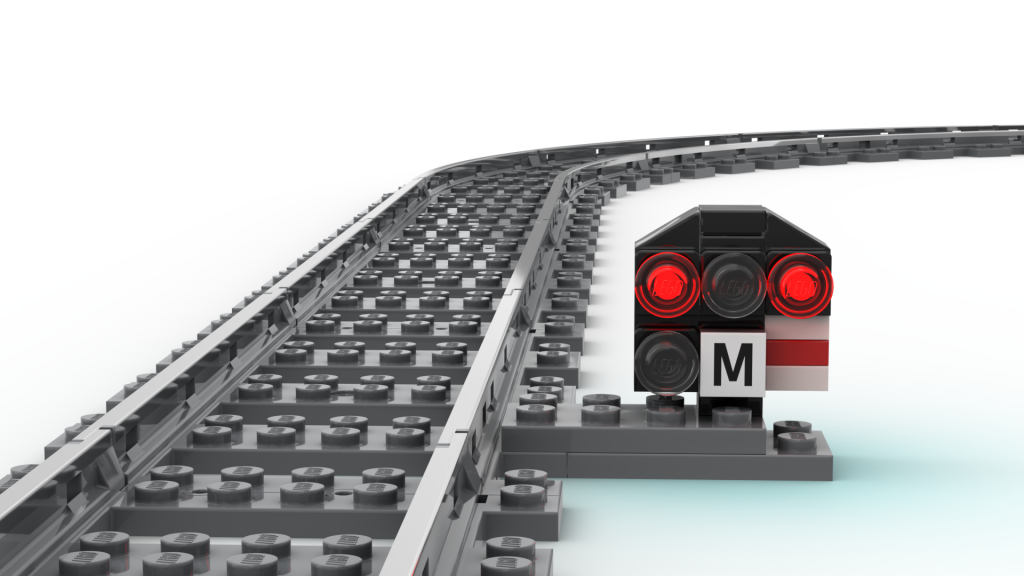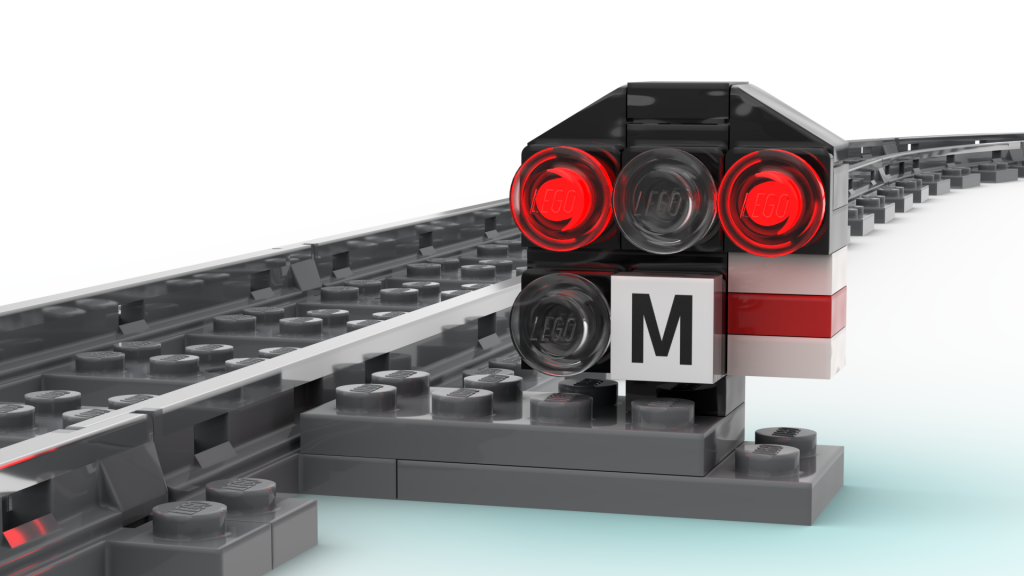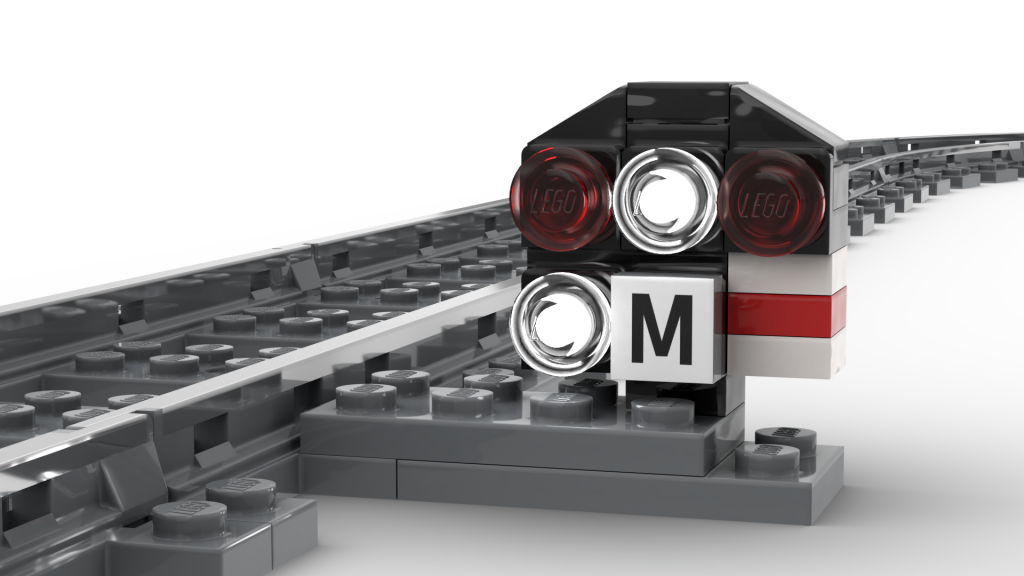On this page, you find information about:
- how to build a German dwarf light signal with LEGO bricks,
- equipping the it with lights,
- automating the signal with a MattzoLayoutController.

About the signal
The signal was originally designed by Matthias Runte of MattzoBricks in 2021.
The signal indicates that the track or switching section ahead is blocked or cleared for shunting operations.

Aspects
The signal can show two different aspects
Sh0 – Stop
The Sh0 aspect is indicated by two red lights. Vehicles may not pass the signal.

Sh1 – Clear
The Sh1 aspect is indicated with two diagonal lights. Vehicles may pass for shunting operations.

Shunting clearance
Two white digital lights indicate the “shunting clearance”. This means that the train may enter the shunting area, but has no clearance to operate on the following main track.
How to build the signal
The signal is very simple to build. Just look at the images above and you will figure it out easily.
Required Parts
The signal can be built with standard LEGO parts and some extra parts as described below. No printed parts are required for this signal.
Additional parts are:
- LEDs (3mm) in white and red colour.
- Thin copper wire with black lace to power up the LEDs (diameter 0,15 mm).
- Basic stuff like a wire board, cables, plugs and connectors.
Lights
To equip the signal with lights, I have used 3mm LEDs in different colours. The wires are very thin, black copper wires used for model scale train layouts. To prevent the LEDs from burning off and to save electrical power, you can add some resistors to limit the current through the LED. At a voltage of 3,3V, 120 Ohm should usually be a good value. Red LEDs usually require larger resistors than others. In question read the data sheet of your LEDs.
Automation
The signal is automated with a MattzoLayoutController (MLC). The MLC receives commands from Rocrail and lights up the correct LEDs for the current signal aspect.
Find more details about the MLC here.
To use the MLC with signals is described here.
Enjoy!
Credits
Julius Brönner contributed some details to the design of the signal.
Thank you for your contribution, Julius.
